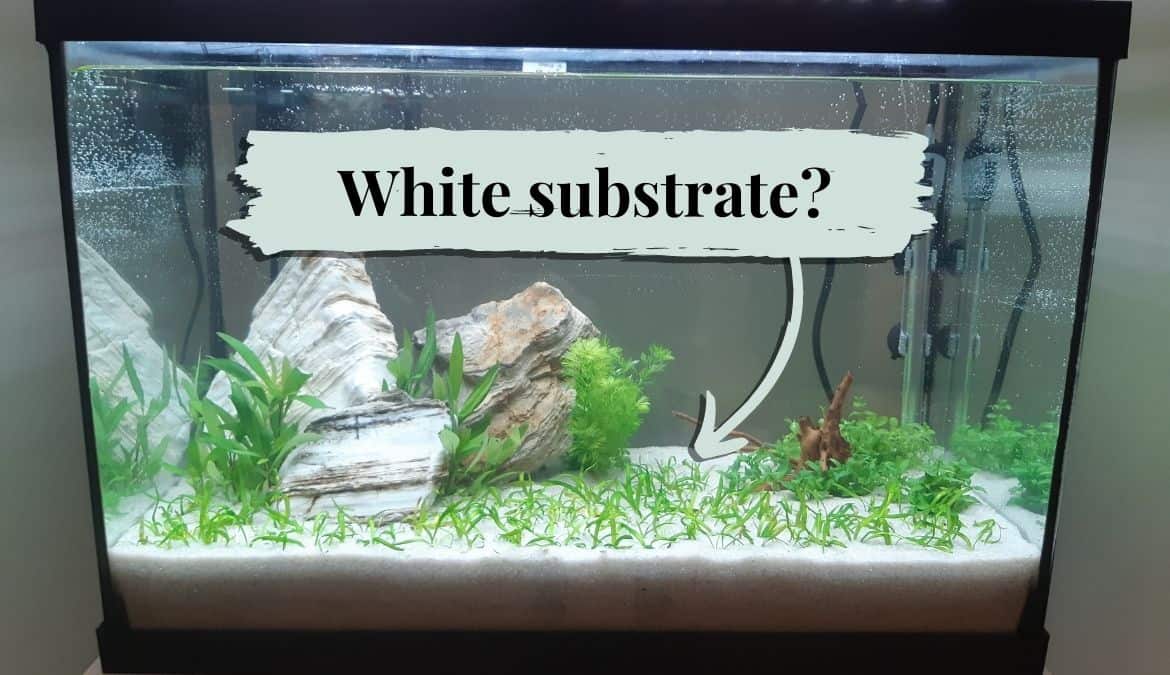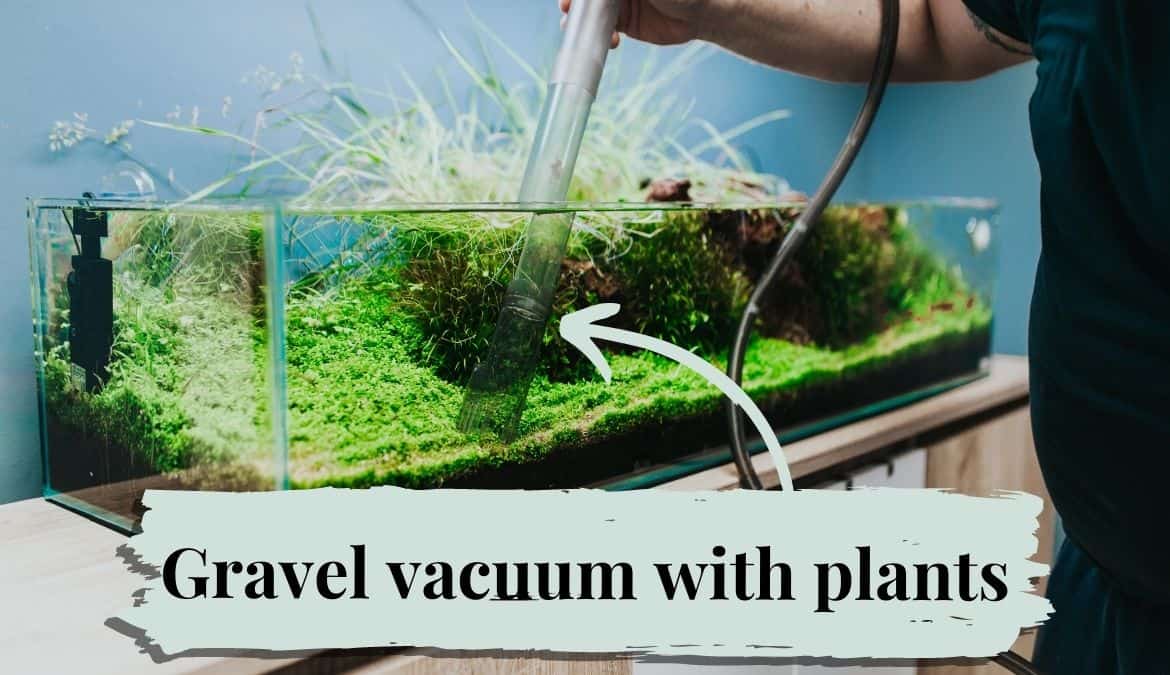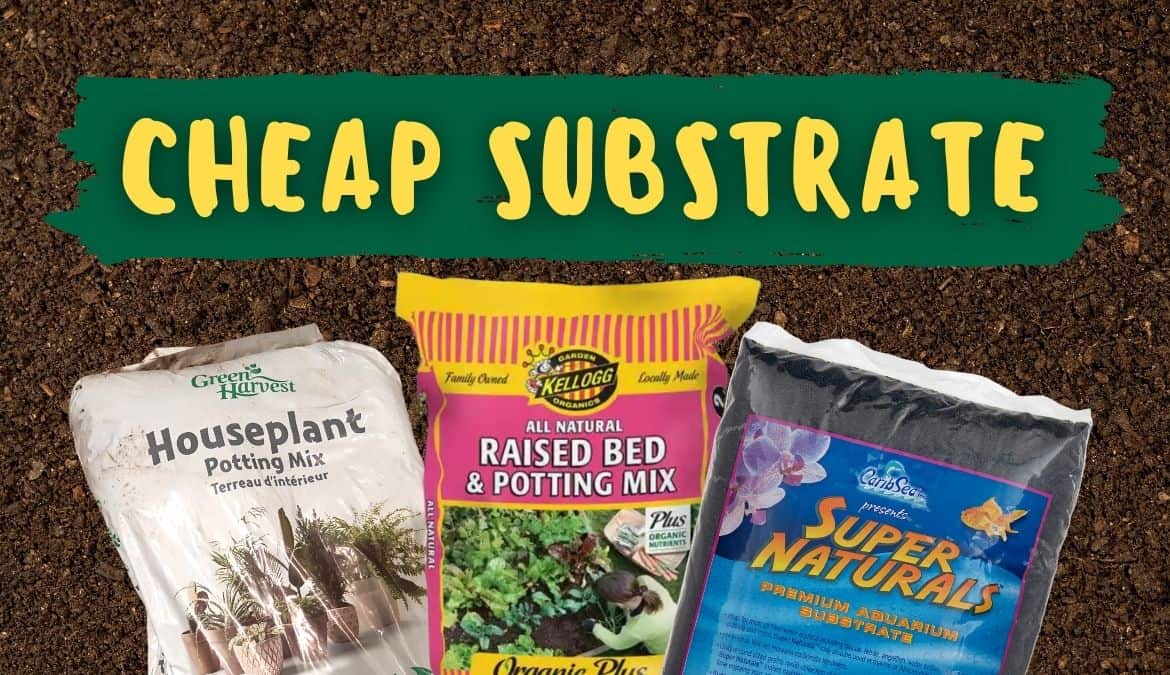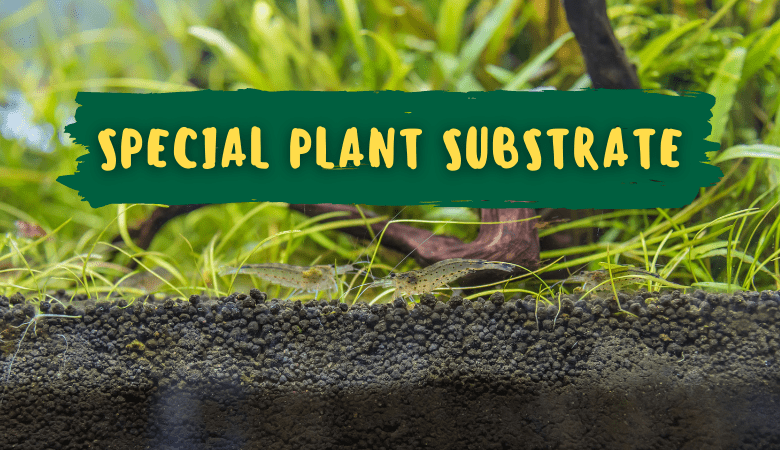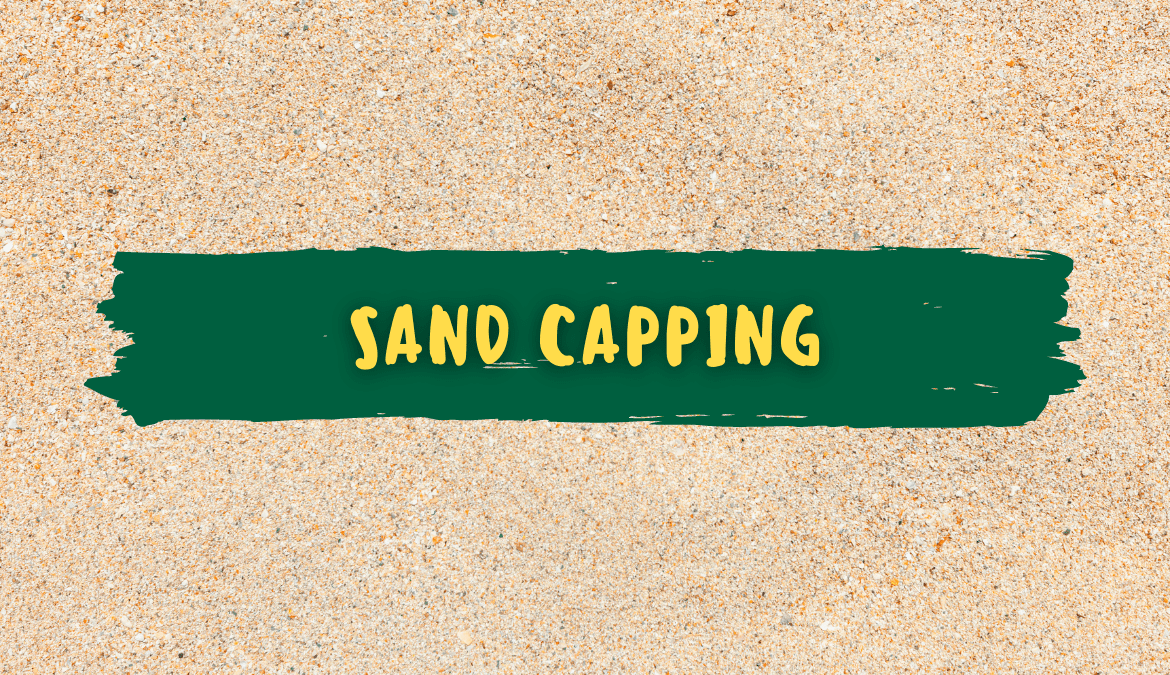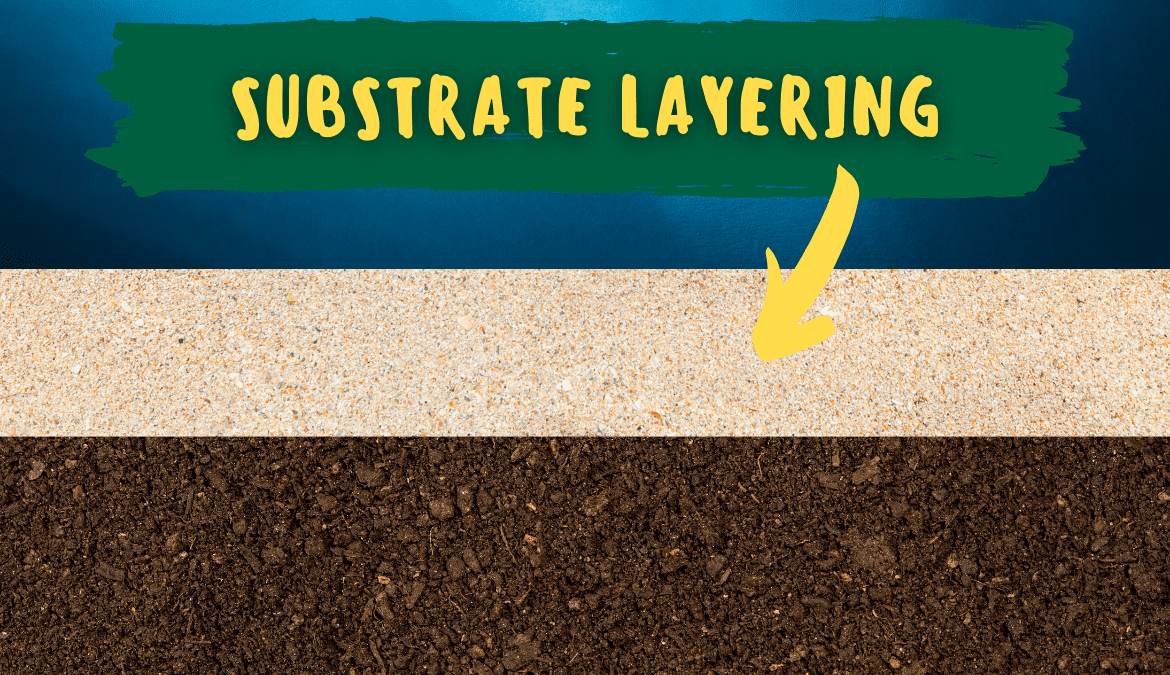CaribSea Super Naturals and Stoney River White Aquatic Sand are the best white substrates for planted aquariums. You can also buy white gravel, crushed coral or white pool filter sand. These substrates require a base layer of organic soil, aquasoil or root tabs to provide plant nutrition.
White substrate looks beautiful and is a popular choice for many fishkeepers. Unfortunately, there are only a few white substrate options on the market.
This article shares some important considerations when choosing white substrate for your next planted tank.
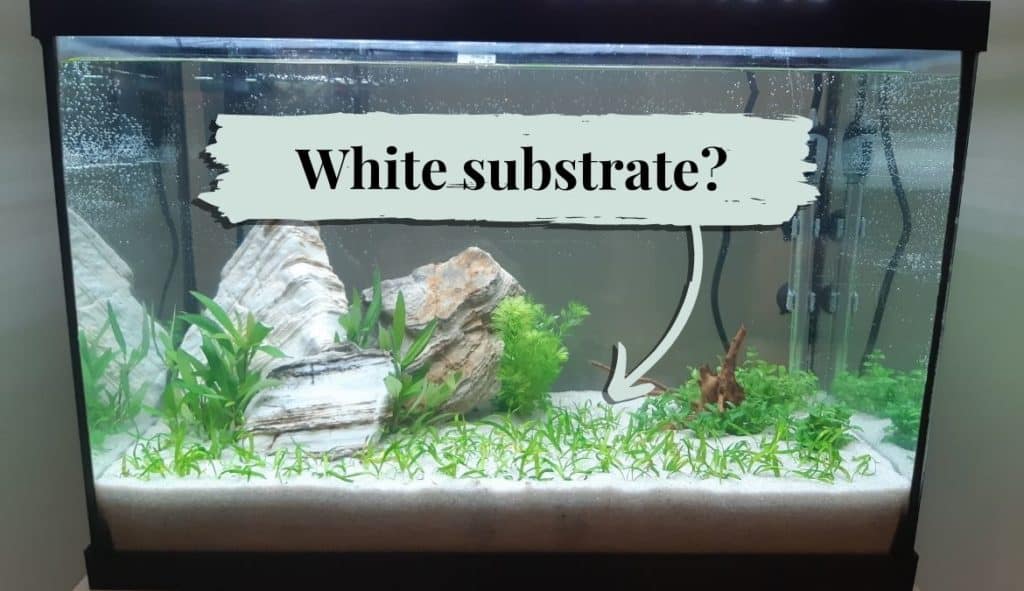
Contents
What type of aquarium substrate comes in white?
CaribSea, Stoney River and Spectrastone sell the most popular and commonly found white substrate. They come in a variety of sand, gravel and crushed coral options.
Crushed coral substrate will increase the pH, general hardness and carbonate hardness of your aquarium. This is useful if your local tap water is very soft or if you’re keeping hard water fish species such as African cichlids.
But for most fishkeepers, an inert white sand or gravel is the prefered option. Here are our favorites:
| White substrate | Price (USD) | Affect on water parameters |
|---|---|---|
| CaribSea Super Naturals Moonlight Sand | $11.77 | None |
| Stoney River White Aquatic Sand | $13.68 | None |
| Spectrastone Special White Aquarium Gravel | $17.45 | None |
| CaribSea Crushed Coral Aragonite | $16.70 | Increases pH, GH & KH |
We used CaribSea Super Naturals Moonlight Sand in our 20-gallon planted aquarium and are really happy with the result.
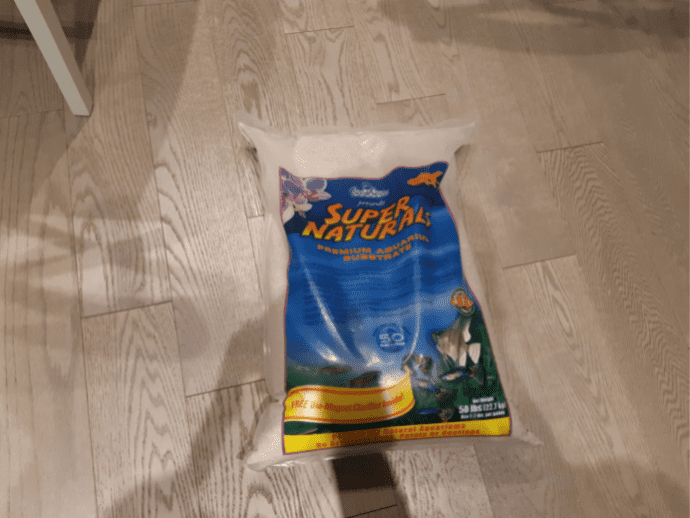
However, all of the white substrates listed above are inert (except aragonite). This means they do not contain any nutrients that are necessary for most aquatic plants – especially heavy root feeders that absorb most of their nutrients from their root system versus the water column.
As a result, you need to either have a base layer of organic dirt or aquasoil or add root tabs if you want to use white substrate for your planted tank. Otherwise your plants will not get the nutrients they need to grow and thrive.
Can plants grow in white aquarium sand?
Many people believe that aquatic plants are unable to grow in inert sand or gravel substrate. There are a couple reasons for this:
Sand lacks nutrients for plants to grow
First, people believe that the lack of nutrients means that plants can’t grow. This is actually true but can be easily solved by using root tabs or adding a layer of nutrient-rich dirt or aquasoil beneath the sand.
For example, we added a 1-inch layer of organic potting mix with sprinkled root tabs on the bottom layer of our 20-gallon planted tank:
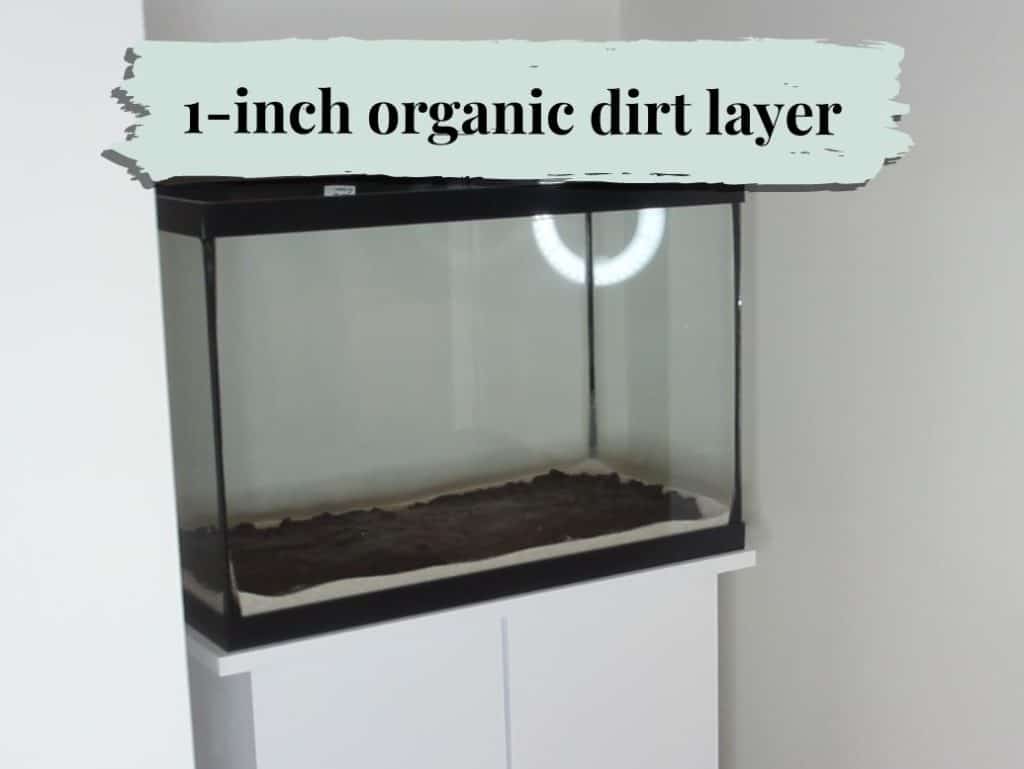
We then capped the dirt with 2-inches of inert Super Naturals white sand:

The organic potting soil, which contains peat moss and other organic materials, provided adequate macro and micronutrients for plants to grow for a year or more without replacing the substrate or adding root tabs.
Sand is too dense for plant roots to grow
Other people believe that sand substrate is too compact and does not allow for plant roots to grow. That was certainly a concern of ours when we first planted our 20-gallon tank:
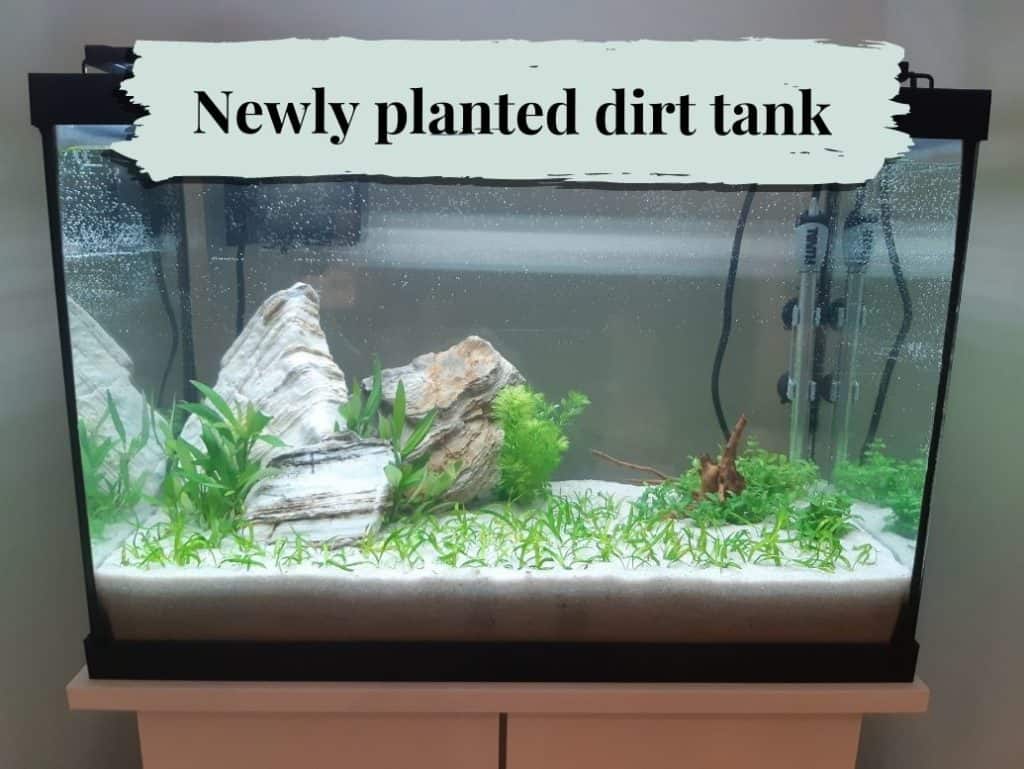
But after a couple weeks we realized that was a fallacy because our plants started growing well. And a few months after that it’s still doing exceptionally well:
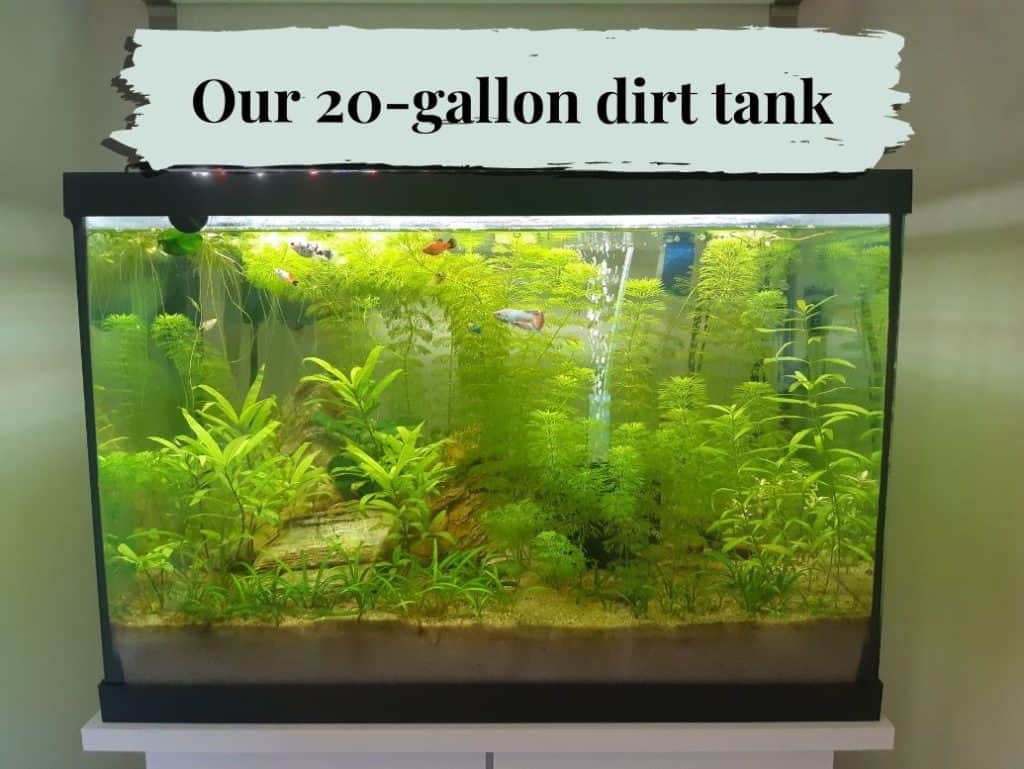
The one type of sand you might want to try avoiding is play sand. It’s a little too heavy and fine that it might be more likely to cause issues.
We recommend white sand designed specifically for aquariums, such as CaribSea and Stoney River. But you can use white pool filter sand as a slightly cheaper alternative.
Drawbacks of white sand
The biggest drawback of white sand is that it shows everything. Fish poop, detritus, algae, decaying plants and other organic materials will be easily visible.
We have found that regular vacuuming allows you to suck up debris and keep your substrate looking mostly clean. It’s not super important to us that our substrate remains perfectly white so we aren’t as mindful as you might be if this is important to you.
You will notice in the images above that detritus will build up along the edges over time and filter down into the substrate. This is noticeable along the glass.
We might have been able to avoid this if we were more diligent and precise with our vacuum routine.
Another drawback is that it’s not wise to remove and reposition plants nces they have been planted. This is especially true for dirt tanks as it will cause the base layer substrate to seep into the water column, which will make it muddy and possibly increase the ammonia concentration.
What type of sand can aquarium plants grow in?
Aquarium plants can grow in pretty much any sand substrate except for maybe play sand. Play sand is a little too dense and heavy to promote optimal root growth. You can likely still grow plants in play sand but you’ll have more success with something like pool filter sand or an aquarium brand sand.
The most important thing is thinking about how your plants will receive root nutrition. You can do this by burying root tabs every month or by using an active base layer substrate such as organic dirt or aquasoil.
Can you buy white aquasoil?
There are no currently available aquasoils that are white. The reason is because most aqua soils are made of a baked clay material that is dark brown.
The best option is to add a 1-inch base layer of aquasoil and cap it with a 2-inch layer of white sand. We also like adding a border of white sand around the bottom edges of the tank to prevent the base layer from seeping into the water column:
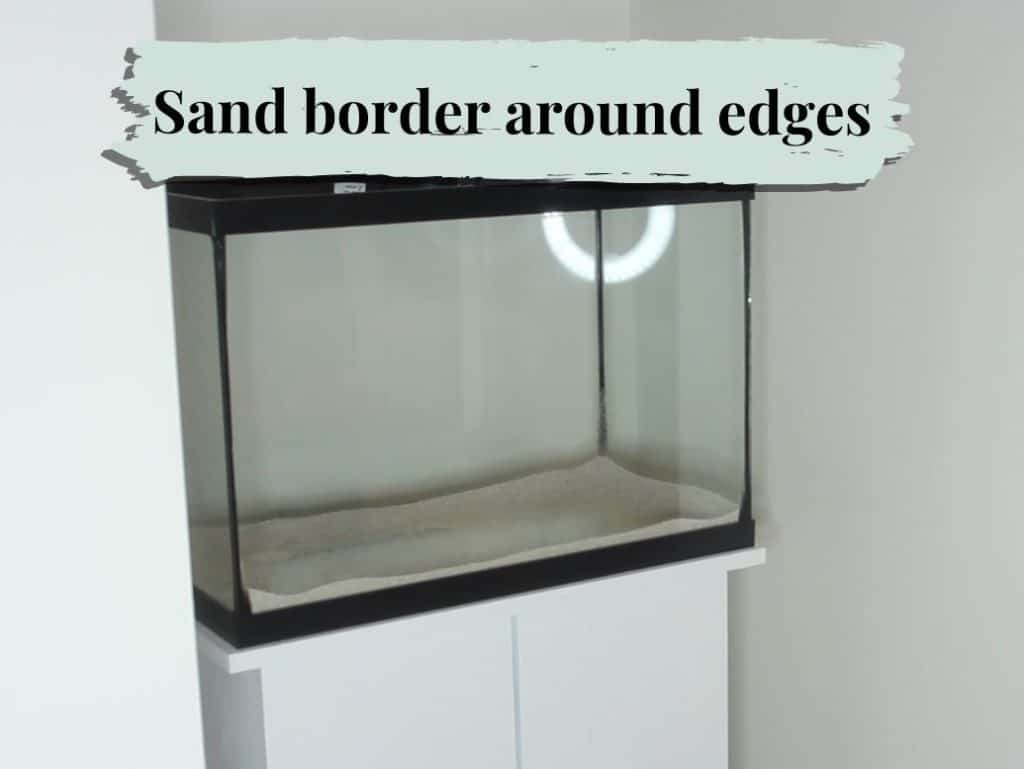
It also makes the entire substrate block look like it’s white sand.


